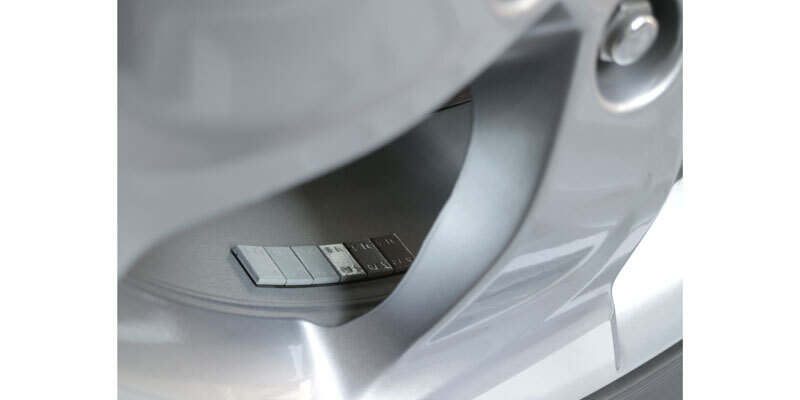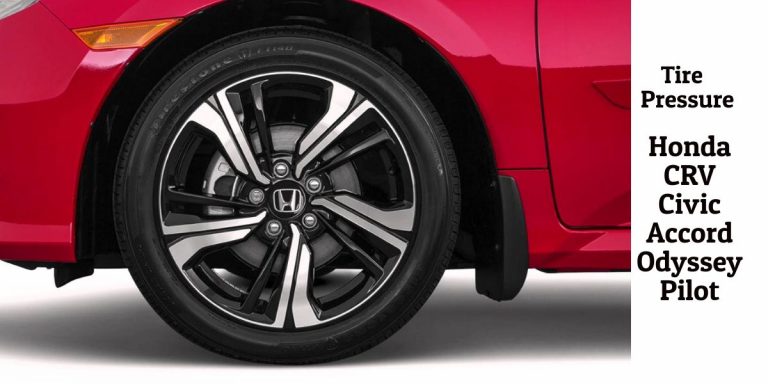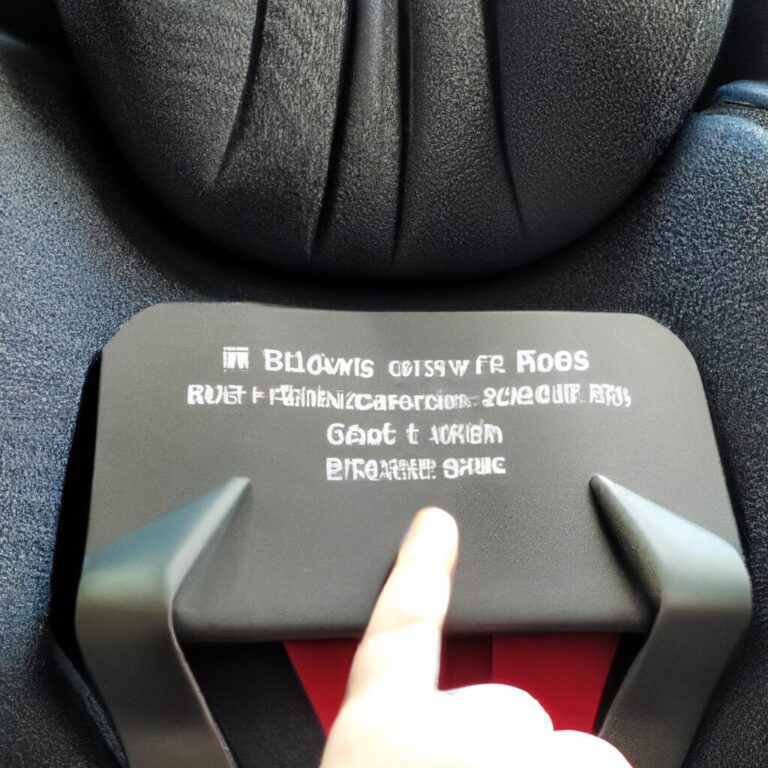Where to Place Stick on Wheel Weights
Place stick-on wheel weights on the inside of the wheel rim close to the spoke. When balancing tires, proper placement of stick-on wheel weights is crucial for achieving optimal balance and preventing vibration during driving.
Correctly positioning the stick-on wheel weights on the inside of the wheel rim adjacent to the spoke helps to maintain tire balance and ensure a smooth driving experience. Improper placement can lead to imbalance issues that can affect vehicle performance and tire wear.
By following the recommended placement guidelines, you can enhance tire balance and overall driving safety. Let’s explore the importance of precise stick-on wheel weight placement to maintain tire balance effectively and ensure a comfortable driving experience.

Credit: m.youtube.com
Importance Of Proper Wheel Balancing
Proper wheel balancing is crucial for the overall performance, safety, and longevity of your vehicle. When the wheels are not balanced, it can lead to a host of issues such as vibrations, uneven tire wear, and potentially hazardous driving conditions. Therefore, understanding the importance of proper wheel balancing and knowing where to place stick on wheel weights is essential for every vehicle owner.
Why Wheel Balancing Is Essential
Wheel balancing is essential to ensure that weight is evenly distributed around the axle of each wheel. This helps to minimize vibrations and provides a smoother ride. Properly balanced wheels also reduce strain on the suspension components, contributing to a more comfortable driving experience and extending the lifespan of the tires.
What Can Happen If The Wheels Are Not Balanced
- Uneven tire wear
- Increased vibration
- Reduced fuel efficiency
- Strain on suspension components
- Decreased handling and stability
Where To Place Stick-on Wheel Weights
When it comes to stick-on wheel weights, accurate placement is crucial for optimal performance. Let’s delve into the different weight placement options on the wheel and understand the purpose behind stick-on wheel weights.
Understanding The Purpose Of Stick-on Wheel Weights
The primary function of stick-on wheel weights is to balance the wheel and tire assembly, reducing vibrations and ensuring a smooth ride.
Different Weight Placement Options On The Wheel
- Inner lip of the wheel: Ideal for hiding the weights from view while maintaining balance.
- Outer lip of the wheel: Provides quick access for adjustments if needed.
- Behind the spokes: Conceals the weights for a clean appearance.
Properly placed stick-on wheel weights can enhance your driving experience by minimizing vibrations and improving overall vehicle performance.
Factors To Consider
When deciding where to place stick-on wheel weights, it is important to consider factors such as the weight distribution of the vehicle, the type of wheel material, and the balance requirements of the particular car model. Ensuring proper placement can help optimize tire performance and minimize vibrations for a smoother drive.
Tire And Wheel Construction
Consider the tire and wheel materials durability and compatibility with adhesive wheel weights.
Driving Conditions And Vehicle Usage
Assess the vehicle’s typical driving environments and driving frequency for optimal weight placement.
Professional Recommendations
Consult with automotive professionals for expert advice on the ideal placement of stick-on wheel weights.

Credit: www.amazon.com
Steps To Place Stick-on Wheel Weights
If you’re considering placing stick-on wheel weights, it’s crucial to understand the proper steps to ensure correct installation. Incorrectly placing stick-on wheel weights can lead to imbalanced wheels, causing some serious safety issues. Here are the steps to properly place stick-on wheel weights on your vehicle:
Gathering Necessary Tools And Materials
Before starting the process, make sure to gather the necessary tools and materials. You will need a stick-on wheel weight kit, a rubber mallet or a hammer with a soft mallet head, a scraper or a wire brush, and isopropyl alcohol.
Removing The Old Weights
First, remove any old weights from the wheel using a scraper or wire brush. Ensure that the wheel surface is entirely clean and free from any residue, as this can affect the adhesion of the new weights.
Cleaning The Wheel Surface
Thoroughly clean the wheel surface with isopropyl alcohol, ensuring that it’s completely dry before applying the stick-on weights. This step is crucial to ensuring proper adhesion and long-lasting performance.
Applying The Stick-on Wheel Weights Correctly
Carefully apply the stick-on wheel weights to the designated areas on the wheel, following the specific instructions provided by the manufacturer. Use the rubber mallet or a hammer with a soft mallet head to ensure the weights are securely in place.
Verifying Balance After Installation
After applying the stick-on wheel weights, it is essential to verify the balance of the wheel using a dynamic wheel balancer. This ensures that the weights have been correctly installed and that the wheel is properly balanced for safe and smooth driving.
Common Mistakes To Avoid
In order to achieve optimal performance and ensure the longevity of your vehicle’s wheels, correctly placing stick-on wheel weights is essential. However, there are several common mistakes that individuals often make, which can compromise the effectiveness of the weights. By being aware of these mistakes and taking the necessary precautions, you can ensure that your stick-on wheel weights are positioned correctly and provide the desired results.
Using Incorrect Weight Size
One of the most common mistakes when placing stick-on wheel weights is using the incorrect weight size. It’s crucial to select the right weight size that matches the specific requirements of your vehicle’s wheels. Using weights that are too heavy or too light can result in an imbalanced wheel, causing vibrations and potential damage to the tire. Before applying any stick-on wheel weights, refer to the manufacturer’s guidelines or consult with a professional to determine the appropriate weight size.
Placing Weights In The Wrong Location
Another common mistake is placing the stick-on wheel weights in the wrong location. Each wheel weight has a specific spot on the wheel rim where it needs to be placed to effectively counterbalance the tire and ensure a smooth ride. Placing the weights too close to the center or too far towards the outer edge of the rim can disrupt the balance of the wheel, leading to vibrations and uneven tire wear. It is crucial to carefully follow the manufacturer’s instructions or seek professional assistance to accurately position the stick-on wheel weights.
Not Cleaning The Wheel Surface Properly
An oft-overlooked mistake is not thoroughly cleaning the wheel surface before applying stick-on wheel weights. Any dirt, grime, or residue on the wheel can prevent the weights from adhering properly, resulting in them becoming loose or falling off. Before applying the weights, ensure that the wheel surface is free from any dirt or debris. Clean the surface using a mild detergent or wheel cleaner, followed by drying it thoroughly. This will provide a clean and smooth surface for optimal adhesion of the stick-on wheel weights.
By avoiding these common mistakes, you can ensure that your stick-on wheel weights are correctly placed and provide the desired benefits. Using the correct weight size, placing the weights in the proper location, and thoroughly cleaning the wheel surface will enhance the balance and performance of your vehicle’s wheels, leading to a smoother and safer ride.

Credit: www.tirereview.com
Frequently Asked Questions For Where To Place Stick On Wheel Weights
Where Do You Put Stick On Wheel Weights?
Stick-on wheel weights should be placed on the inside of the wheel rim, opposite the tire valve. Make sure the wheel surface is clean before applying the weights for proper adhesion and balance.
Where Do You Put The Weight On A Wheel Balance?
Place the weights on the wheel rim to balance it properly for smooth driving experience.
Does It Matter Where Wheel Weights Go?
Positioning wheel weights correctly is crucial for balanced wheels, ensuring smooth driving and preventing vibrations. Placing them on the inner or outer rims as recommended is essential for optimal performance.
Where Do Weights Go On A Tire?
Weights are typically placed on the rim of the tire to balance it. It is important to ensure that the weights are placed evenly around the rim to prevent vibrations while driving. Professional installation is recommended for accurate placement.
Where Should I Place Stick-on Wheel Weights On My Vehicle?
Stick-on wheel weights should be placed on the outer surface of the wheel rim, opposite the tire valve stem.
Can I Place Stick-on Wheel Weights On Any Type Of Vehicle?
Yes, stick-on wheel weights can be used on most types of vehicles, including cars, trucks, SUVs, and motorcycles.
How Do Stick-on Wheel Weights Stick To The Wheel Rim?
Stick-on wheel weights have an adhesive backing that allows them to securely stick to the wheel rim.
Conclusion
Placing stick on wheel weights in the right location is crucial for optimal performance. By understanding the importance of proper placement and adhering to the manufacturer’s guidelines, you can ensure that your vehicle runs smoothly and maintains a balanced wheel assembly.
It’s a small detail that can make a big difference in your driving experience.



